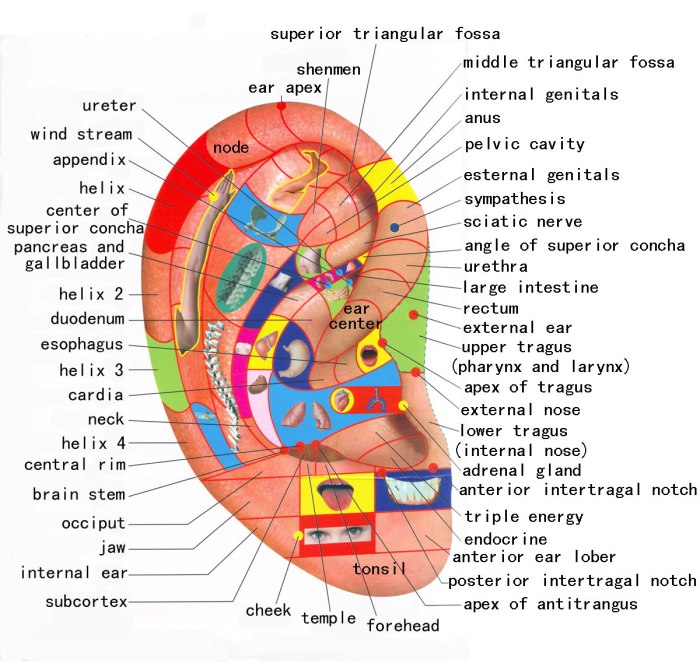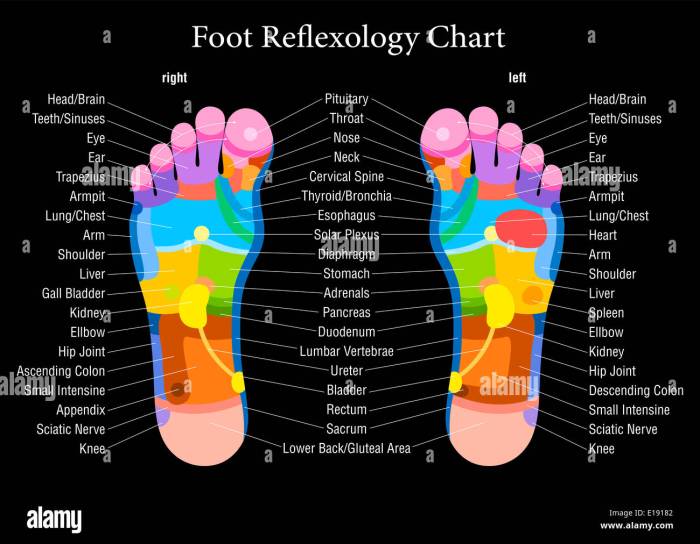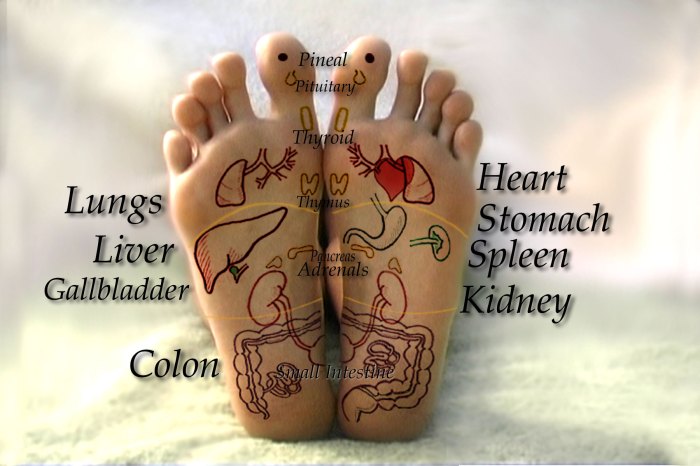What are the 3 types of reflexology – Introducing the multifaceted world of reflexology, this article delves into the depths of its three primary types: foot, hand, and ear reflexology. Each technique offers a unique approach to promoting health and well-being, targeting specific areas of the body through the stimulation of reflex points.
Foot reflexology, the most widely known form, focuses on the feet as a microcosm of the entire body. By applying pressure to designated reflex points, practitioners aim to alleviate ailments ranging from headaches to digestive issues. Hand reflexology, on the other hand, shares similarities with foot reflexology but utilizes the hands as the primary treatment area.
It proves particularly effective in reducing stress, managing pain, and promoting overall relaxation.
Three Main Types of Reflexology

Reflexology, an ancient healing technique, is a specialized form of massage that involves applying pressure to specific points on the feet, hands, or ears to alleviate stress, promote relaxation, and improve overall well-being. There are three main types of reflexology, each with its unique techniques, target areas, and benefits:
The primary distinction between the three types of reflexology lies in the specific areas of the body that are targeted. Foot reflexology focuses on pressure points located on the feet, while hand reflexology targets pressure points on the hands. Ear reflexology, also known as auriculotherapy, focuses on pressure points located on the ears.
The table below provides a comprehensive comparison of the key characteristics of the three main types of reflexology:
| Type of Reflexology | Target Areas | Techniques | Benefits |
|---|---|---|---|
| Foot Reflexology | Pressure points on the feet | Firm pressure, circular motions, and thumb walking | Promotes relaxation, reduces stress, improves circulation, and alleviates pain in corresponding body parts |
| Hand Reflexology | Pressure points on the hands | Gentle pressure, circular motions, and thumb walking | Enhances hand dexterity, reduces tension in the hands and arms, and promotes relaxation |
| Ear Reflexology | Pressure points on the ears | Light pressure, gentle massage, and acupressure techniques | Improves hearing, reduces tinnitus, alleviates headaches, and promotes overall well-being |
Foot Reflexology

Foot reflexology is a holistic healing technique that involves applying pressure to specific points on the feet, known as reflex points, to stimulate and balance the corresponding organs and systems in the body. The principle behind foot reflexology is based on the concept that the feet are a microcosm of the entire body, with each reflex point representing a specific body part.
Techniques Involved
Foot reflexology techniques vary, but generally involve applying firm pressure to the reflex points using the thumbs, fingers, or a specialized reflexology tool. The pressure is applied in a circular or linear motion, and the duration of pressure can range from a few seconds to several minutes.
Reflex Points on the Feet, What are the 3 types of reflexology
The reflex points on the feet are organized into zones that correspond to different body regions. For example, the toes represent the head and neck, the arch of the foot represents the chest and abdomen, and the heel represents the lower back and pelvis.
By stimulating the appropriate reflex points, practitioners aim to promote relaxation, relieve pain, and improve overall health and well-being.
Potential Benefits
Foot reflexology has been shown to provide numerous potential benefits for various health conditions, including:
- Stress reduction and relaxation
- Improved sleep quality
- Pain relief, particularly in the head, neck, and back
- Enhanced circulation and lymphatic drainage
- Boosted immune function
- Hormonal balance
- Digestive and respiratory support
It is important to note that foot reflexology is not a substitute for medical care and should not be used to diagnose or treat serious health conditions. However, it can be a complementary therapy to support overall well-being and address specific health concerns.
3. Hand Reflexology

Hand reflexology shares similarities with foot reflexology in that it involves applying pressure to specific points on the hands to stimulate corresponding body parts. However, there are also key differences. Hand reflexology focuses on the hands, which are more accessible and convenient to work with than the feet.
Additionally, the reflex points on the hands are smaller and more concentrated, making it easier to target specific areas.The reflex points on the hands correspond to various organs, systems, and body parts. For example, the thumb represents the head and neck, while the fingers represent the spine and ribs.
The palm of the hand represents the internal organs, and the back of the hand represents the muscles and bones.Hand reflexology can provide numerous potential benefits, including stress relief, pain management, and overall well-being. By stimulating the reflex points on the hands, hand reflexology can help to promote relaxation, reduce tension, and alleviate pain.
It can also improve circulation, boost the immune system, and enhance energy levels.
Reflex Points on the Hands
The reflex points on the hands are located in specific zones, with each zone corresponding to a different part of the body. The following are some of the key reflex points on the hands:
- Thumb:Head and neck
- Index finger:Spine and ribs
- Middle finger:Digestive system
- Ring finger:Respiratory system
- Pinky finger:Circulatory system
- Palm:Internal organs
- Back of the hand:Muscles and bones
By understanding the location of these reflex points, practitioners can effectively target specific areas of the body for treatment.
Ear Reflexology (Auriculotherapy)

Ear reflexology, also known as auriculotherapy, is a unique form of reflexology that focuses on the ears. The ears are considered a microcosm of the entire body, with specific reflex points corresponding to various organs, body parts, and systems.
The reflex points on the ears are highly sensitive and can be stimulated through gentle pressure, massage, or acupuncture needles. By targeting these points, practitioners aim to promote relaxation, reduce pain, improve circulation, and balance the body’s energy flow.
Potential Benefits
Ear reflexology has been shown to provide several potential benefits, including:
- Addiction recovery:Ear reflexology may help reduce cravings and withdrawal symptoms associated with addiction to substances such as alcohol, nicotine, and drugs.
- Pain relief:Stimulating specific reflex points on the ears can help alleviate pain in various parts of the body, including headaches, back pain, and joint pain.
- Emotional regulation:Ear reflexology can promote relaxation and reduce stress levels, potentially improving mood and emotional well-being.
Popular Questions: What Are The 3 Types Of Reflexology
What is the main difference between foot and hand reflexology?
While both foot and hand reflexology stimulate reflex points to promote healing, foot reflexology primarily targets the entire body through the feet, while hand reflexology focuses on specific areas and systems using the hands.
What are the benefits of ear reflexology?
Ear reflexology, also known as auriculotherapy, offers potential benefits for treating addiction, reducing pain, and regulating emotions by targeting specific reflex points on the ears.